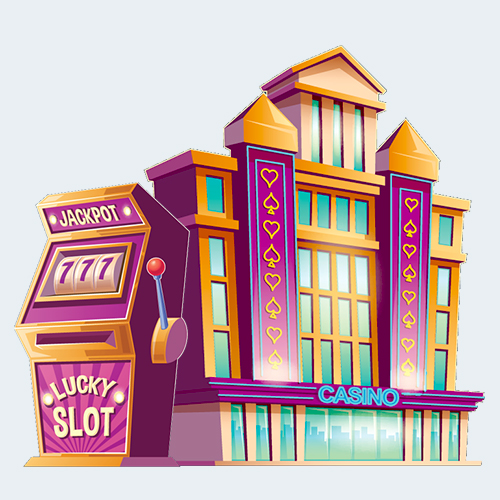Attracting players to a casino takes more than just chance. It requires a deep understanding of psychology and the skilful design of immersive environments that keep them coming back. In this article, we explore the secrets of casino design psychology, examining the detailed elements that create an enjoyable player experience. By uncovering the psychological triggers behind successful casino layout design, we reveal how to emotionally engage players and earn their lasting loyalty, whether online or offline.
Understanding Player Psychology
The world of gambling is a fascinating realm where human psychology intertwines with the thrill of taking risks.
To create an enjoyable environment for players and keep them returning, it is essential to delve into the psychology of gambling and understand the motivations that drive players.
Some players seek the adrenaline rush and excitement that comes from taking chances, while others may be driven by the desire for social interaction or the hope of financial gain.
By understanding the diverse motivations behind gambling, casino designers can tailor their environments to cater to these different needs and create experiences that resonate with each player.
Identifying the Fundamental Needs and Desires of Players
At the core of every player’s experience are fundamental needs and desires that shape their engagement with casinos.
These needs can include:
- the desire for entertainment
- escape from everyday life
- social connection
- achievement
- the pursuit of pleasure.
When identifying these underlying needs, casino designers can strategically incorporate elements into their environments that fulfil these desires.
Whether through immersive storytelling, captivating themes, or interactive features promoting socialisation, catering to these fundamental needs enhances the player experience and fosters a sense of satisfaction and fulfilment.
The Impact of Emotional Engagement on Player Experience
Emotions are crucial in shaping the player experience within a casino environment. Positive emotions such as joy, excitement, and anticipation can heighten the game’s enjoyment and increase the likelihood of players returning.
Conversely, negative emotions such as frustration or disappointment can lead to dissatisfaction and discourage repeat visits.
Emotional engagement is closely tied to factors like sensory stimuli, game design, and the overall atmosphere of the casino.
Designers can truly connect with the players by triggering positive emotions through visually appealing aesthetics, engaging gameplay mechanics, or personalised experiences.
This deep emotional connection leads to a more enjoyable and long-lasting experience that players will never forget.
Elements of Successful Casino Design
A successful casino design encompasses various factors contributing to an immersive gambling experience.
Whether it’s a traditional casino or an online platform, careful attention to design elements can greatly enhance the overall atmosphere and engagement.
Physical Casino Design
The design of a physical casino plays a fundamental role in shaping the overall gambling experience for visitors.
From the moment you step foot into the casino, everything works in harmony to create an immersive and captivating atmosphere.
For that reason, in the following, you’ll learn what are the key elements that make casinos so attractive:
- Layout and Flow: The layout of a traditional establishment plays a crucial role in creating a seamless flow for visitors.
A well-designed layout ensures easy navigation, clearly defined gaming areas, and logical placement of amenities like bars, restaurants, and restrooms.
Strategic placement of slot machines and table games encourages exploration and maximises player engagement.
- Lighting and Color Psychology: Thoughtful lighting can greatly impact the ambience of a casino.
Properly balanced lighting sets the mood and directs attention to specific areas. Colour psychology also evokes desired emotions and creates a vibrant atmosphere.
Warm colours like red and orange often stimulate excitement and energy, while cool colours like blue and green promote relaxation.
- Soundscapes and Audio Design: A carefully curated soundscape can enhance the overall experience, create a lively atmosphere, and mask external noise.
Pleasant background music, celebratory sounds of winning, and subtle audio cues for notifications all contribute to the immersive casino environment.
- Architecture and Interior Design: The architectural design of a casino establishes its identity and sets it apart from competitors.
Unique and visually appealing architectural elements and captivating interior design contribute to the overall aesthetic appeal.
Attention to detail, the use of luxurious materials, and visually striking decor all add to the allure of the physical casino.
Important Land-based Casino Design Elements to Keep in Mind
Everything you see (or don’t see) in a land-based casino is designed specifically to ensure that you stay there for as long as possible, play many games and spend a lot of money. These are the things you should pay attention to.
You cannot find a casino without them, but you can lower their impact & control over your actions.
The Casino’s Floor Plan
Casinos are known for the strategic planning that goes into designing their floor plans. It is in fact a laborious technique that is utilized in order to provide players with a particular sensation when they are present there.
Have you ever found yourself in a casino and had the impression that you were in the middle of a maze? This is how it was intended to work.
The casino does not want guests to find their way out of the building easily. Their goal is to see if they can get people to walk past as many of their games as possible before leaving.
This way, there will be an increase in the possibility that the gamers may participate in a different game before leaving. This architectural method was pioneered in the United States, but it has now made its way into casinos all over the world.
It’s the same strategy that supermarkets employ to get people to buy additional items from their shelves.
Customers are encouraged to make additional purchases beyond the ones they had planned on making when alluring products are placed in close proximity to the cash registers.
A similar psychological ruse is utilized by casinos in an effort to convince customers to try their luck at a variety of games.
No Clocks
The absence of clocks within casinos is one of the most notable architectural features of these establishments.
It ensures that players will not look up, notice a clock, and become aware of the length of time they have been playing for.
Of course, people have watches and smartphones nowadays but looking at them involves more effort than staring at a huge clock right in your face.
Because there are no clocks, it is much easier for players to lose track of time, and as a result, they play for a greater amount of time.
It provides casinos with the chance to keep gamers around for longer, which ultimately allows the casinos to generate more money from the players.
This indicates that they will be more likely to concentrate on the game that they are playing as opposed to looking up at the clock every few minutes to check the time.
This option for the design is without a doubt one of the easiest to put into action because it does not demand any sort of preparation in advance.
No Windows
If you have ever been inside a casino, you are probably already aware that there are no windows inside of them.
This is a psychological ploy to fool players into thinking that it is not yet a specific time of day.
When a player is inside of a casino and they look out a window and see the sun rising, it will bring to their immediate attention the amount of time that has passed since they entered the establishment.
In the same vein, if they observe the sun going down, that will also have an effect on them.
Therefore, the architects who create casinos ensure that there are no windows in the establishments so that the customers have no way of knowing how long they have been there.
It’s the same thing that they use for clocks and together they ensure you will be playing for longer periods.
Food & Drinks
Because it is connected to maintaining player engagement, this design choice is one that is poorly understood by a significant portion of the population.
Players won’t have to step outside the casino to get something to eat or drink because the casino will have its own restaurants and bars stocked with refreshments for them to choose from.
This indicates that once they have completed eating, they are more likely to resume their previous activity, which was playing.
For instance, if they went outside the building to find a place to eat they will probably not return to gamble on the same day if at all.
If they consume their meals within the casino, there is a significantly increased likelihood that they will proceed directly back to the tables as soon as they have finished their meals.
Additionally, casinos frequently give away complimentary food vouchers, which helps to make the eateries located within the venue a lot more desirable to customers.
The presence of free food will make it much more likely for them to remain inside, especially when the cost of food in the outside world is taken into consideration.
They also offer unlimited drinks which serve the purpose of getting you comfortable, relaxed and feeling like you’re winning since you’re not paying for them.
But can also get you drunk which will lower inhibitions and the ability to judge situations which can end up making you lose more money in the long run.
Online Casino Website Design
With the rapid growth of online gambling, the design of online casinos has become increasingly important in capturing the attention and loyalty of players in the digital realm.
From intuitive user interfaces and visually appealing aesthetics to interactive features and personalised experiences, online casino design aims to provide players with a seamless and immersive gaming environment.
Now, let’s see what other elements entice players to join online betting sites:
- User Interface and Navigation: Online platforms require intuitive user interfaces and seamless navigation to ensure a user-friendly experience.
Clear categorisation of games, easy access to account settings, and convenient payment options contribute to the overall usability.
A well-designed interface enhances engagement and encourages players to explore the various offerings.
- Visual Aesthetics and Branding: Gambling sites need visually appealing designs that reflect their brand identity.
Consistent branding elements, such as logos, colour schemes, and typography, help establish trust and familiarity among users.
High-quality casino graphic design and engaging visuals create an immersive gambling environment that keeps players coming back.
- Interactive Features and Gamification: Operators often incorporate interactive features and gamification elements to enhance user engagement.
These may include casino bonus systems, loyalty programs, challenges, tournaments, and achievements.
Such features create a sense of progression, reward players for their activity, and add an element of fun to the gambling experience.
- Mobile Optimisation and Accessibility: With the rise of mobile gaming, online casinos must prioritise mobile optimisation.
Responsive design ensures seamless gameplay across different devices, providing a consistent experience for players on smartphones and tablets.
Moreover, the best online casino design has accessibility features, such as adjustable font sizes and compatibility with screen readers, making betting sites inclusive for users with disabilities.
Psychological Triggers for Player Retention
Player retention is crucial to any successful gaming platform, and understanding the psychological triggers that keep players engaged is essential.
Here are some key triggers that contribute to player retention:
Reward Systems and Reinforcement:
Offering loyalty programs and VIP clubs incentivises players to continue their engagement.
Casinos create a sense of value and recognition by providing rewards, exclusive perks, and special privileges, encouraging players to stay loyal and engaged.
Also, implementing gamification elements, such as achievements and milestones, taps into players’ desire for recognition and accomplishment.
Unlocking badges, reaching levels, and completing challenges provide a sense of progress and satisfaction, motivating players to continue playing.
Social Interaction and Community Building
Incorporating multiplayer games and tournaments fosters social interaction and healthy competition among players.
The opportunity to compete with or against friends and other players creates a sense of camaraderie, encourages engagement, and keeps players coming back for the social experience.
Moreover, including chat features and virtual avatars enables players to interact with each other and express their personalities.
Chatting, forming friendships, and creating a sense of community contribute to player retention by establishing social connections and a sense of belonging.
Personalisation and Tailored Experiences
Leveraging player data allows for personalised experiences tailored to individual preferences.
By understanding players’ behaviours, preferences, and past activities, gaming platforms can offer personalised recommendations, casino bonuses, and game suggestions, enhancing the overall experience and increasing player retention.
Furthermore, implementing adaptive gameplay mechanics and recommendations based on player preferences creates a tailored experience.
Dynamic game features, difficulty adjustments, and personalised content suggestions keep players engaged by catering to their specific interests and providing a unique experience.
Psychological triggers can play a key role in boosting player retention on gaming platforms. When these elements are combined, gaming platforms can create an environment that keeps players continually engaged, satisfied, and excited to return for more.
Ethical Considerations in Casino Design
Designing a casino involves more than just creating an entertaining and engaging experience for players.
Ethical considerations play a crucial role in ensuring responsible gambling practices and player protection. The key ethical considerations in casino design are the following.
Balancing Player Enjoyment with Responsible Gambling Practices
It is essential to strike a balance between providing an enjoyable experience for players and promoting responsible gambling.
Design elements should not exploit vulnerabilities or encourage excessive gambling behaviour.
Responsible design practices may include clear information about the odds of winning, responsible gambling messaging, and avoiding design features that exploit psychological triggers to encourage excessive play.
Encouraging Healthy Play Habits and Setting Limits
Casino design should support healthy play habits and help players set limits on their gambling activities.
Incorporating features that promote responsible gambling, such as time and spending limits, can assist players in maintaining control over their gambling behaviour.
Showing visible session duration reminders, promoting breaks, and encouraging responsible bankroll management can help prevent problem gambling.
Self-Exclusion and Player Protection Measures
Designing casinos with self-exclusion and player protection measures is crucial to address the needs of vulnerable individuals.
Providing options for self-exclusion, where players can voluntarily exclude themselves from gambling activities, helps prevent harm and addiction.
Moreover, implementing age verification measures and mechanisms to identify and assist players showing signs of problem gambling is essential for player protection.
Casino design should uphold ethical standards, prioritising player welfare and responsible gambling practices.
Achieving this requires a balance between player entertainment and responsible gambling, promoting healthy play habits, and integrating self-exclusion and player protection measures.
By doing so, casinos can create a fun-filled yet safe environment, mindful of the potential risks of gambling.
Conclusion
Ultimately, every casino should have a set of guidelines dedicated to ethical considerations in design.
These should include clear policies when it comes to using psychological triggers to induce gambling behaviour within players.
Everything from graphical cues and sounds to sign-up bonuses and reward schemes can all play into the psychology of an effective casino design.
Ultimately, casino designers and developers must always remember that they have a responsibility not just towards their client base but also to the various regulations related to gaming.
As we draw this blog post to a close, let’s all make sure whatever our plans for our gaming experiences are – always play responsibly.

 Free Slots
Free Slots











